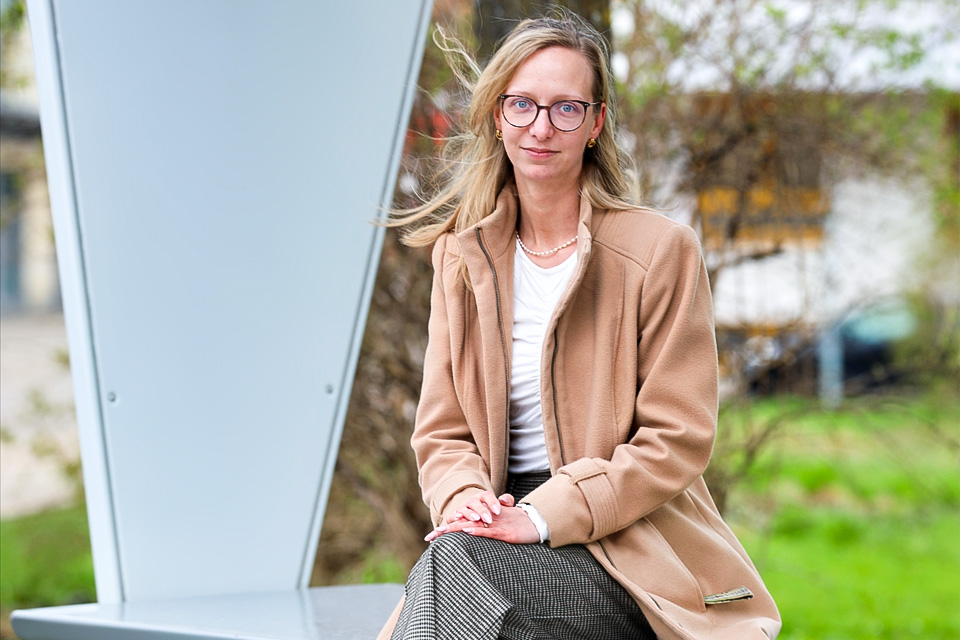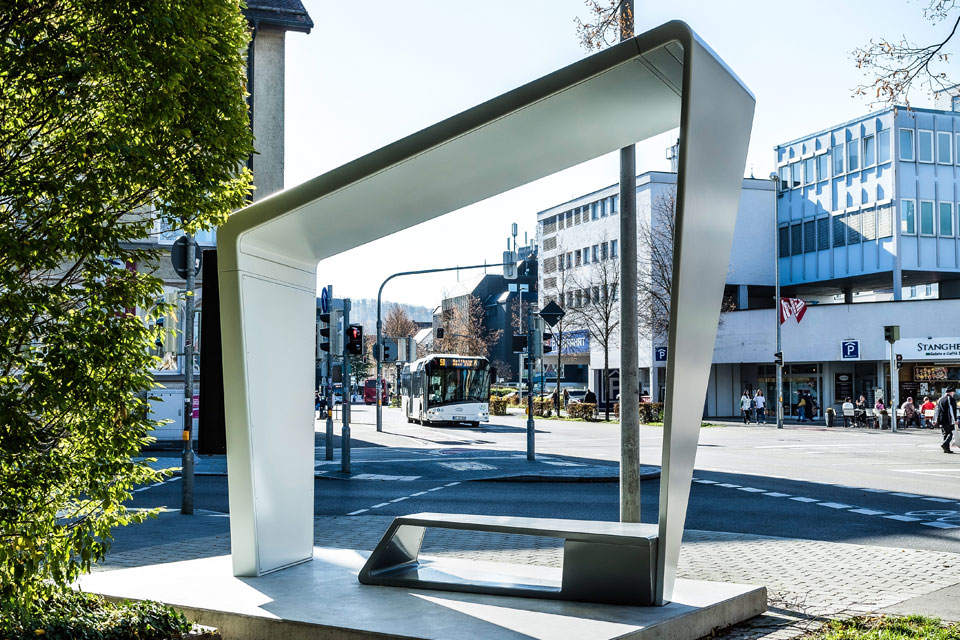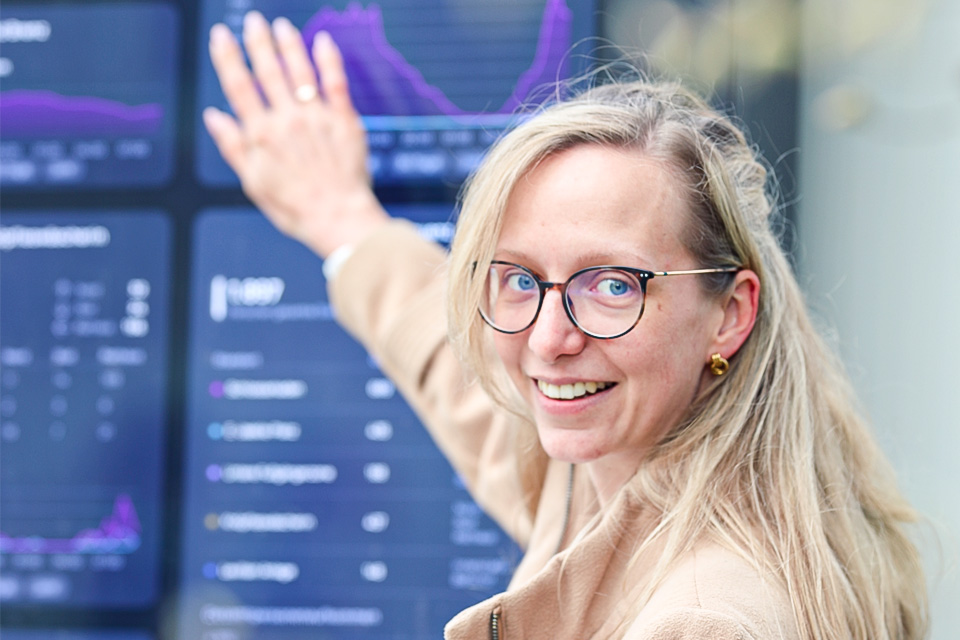
Hello Ms. Dudel, thank you for taking the time to talk to us about the C.F. Maier Smart City pilot project, which has been tested in Heidenheim since October 2022.
First, a few questions about you: Who are you and what position do you hold?
My name is Pia Dudel, I have been the project manager in the Smart City area for two years. Together with the city of Aalen, we have been provided with funding of around 7.5 million euros to digitize our cities by 2027 and to do pioneering work on smart cities in Germany.
How do you actually become a smart city representative?
It was a lucky coincidence, as I would describe it today. In 2012, I had already started my professional life in the form of a dual study program at the city of Heidenheim.
After various stations in project management and a master's degree with a focus on innovation management and an intensive examination of the opportunities offered by digital technologies, I returned home.
For me, the project is therefore not just another task, but an affair of the heart.
What significance does the Smart City concept have for the city of Heidenheim?
A very high one.
Until now, before the start of the project, the focus was on digitization within the administration. In other words, it was about digitizing administrative processes. In our Smart City project, we are thinking about this task beyond the administrative process: for example, we are looking at environmental protection, infrastructure development, mobility and inner-city development – in other words, everything that can make everyday life easier, more livable and more efficient for the people of Heidenheim. So our overriding goal is to create a better quality of life with the help of digital technologies.
Why is the topic of smart cities so important for a relatively small town like Heidenheim?
I think it depends on the needs of the residents of a municipality, not on the size of the city. These are much different in Stuttgart, for example, than here in Heidenheim. That's precisely why it's important to test and apply the Smart City concept under different conditions and in different communities. Only in this way can the individual living and working conditions of all sections of the population be identified and improved in the long term.
At the same time, it is important to position Heidenheim as an attractive business location in the future. A digital infrastructure is the basis for many industries. Smart urban development, for example, can help revitalize the city center, which strengthens the retail sector. Another important guideline for the planning of smart cities is the aspect of "sustainability" and thus a topic that must be addressed holistically – not just by large cities.
What efforts is Heidenheim making to advance smart solutions for urban space?
In the first week of March this year, we in our municipal council and the city of Aalen with its municipal council adopted a comprehensive smart city strategy that lists the subprojects for the smart development of both cities. The next step is to implement the adopted points.
Important here are the topics of data management, data preparation and data availability, especially with regard to climate and environmental data. These can be used to forecast hazardous and crisis situations – for example, floods, black ice or heavy rain – and to initiate appropriate countermeasures in good time.
A relevant topic for us is also the vitality and watering of our plants in inner-city areas, which are increasingly suffering from climate-related drought stress. We could counter this problem with automated and resource-saving irrigation systems.
With regard to mobility, we want to provide data-driven support for public transportation. For example, it would be possible to output timetable information in real time and inform citizens immediately about delays and the respective reasons.
We see further potential in using sensor technology to enable people to live a self-determined life in old age. For example, the operating times of appliances such as stoves or light sources could be analyzed to identify unusual behavior patterns that indicate a fall, so that assistance can then be initiated. This enables older people to live in their own homes for as long as possible without sacrificing safety-related aspects.
The possibilities that a networked city can offer are practically endless. I am convinced that we can generate a little extra added value for all groups in society with smart solutions in every subject area and task area of the administration.

What contribution does the C.F. Maier City Solutions pilot project make to the digitalization of the city?
The sensors installed in the covered bench from C.F. Maier City Solutions provide us with data on soil moisture, tree vitality, fine dust pollution and the number of people in the area between the train station and the city center. So we have a lot of technology built into one piece of furniture – and in a public space with a modern, innovative design made of a material that can withstand the elements.
With the help of sensor technology, we can check, for example, what effects various events, such as the Christmas market, have on the city center and how visitor flows develop at different times of the week. Thanks to LoRaWan, a long-range wireless technology, we transmit the data in real time and can visualize it on the dashboard at the bench, for example.
In the future, we would like to analyze this data in an even more targeted manner and bundle it into a common statement, because that's when it gets really exciting: Thanks to the combination of data on traffic volume, weather, icy conditions and the deployment times of the winter road clearance service, forecasts can be made as to which locations are at risk of icy conditions, so that we as a city can react early and people can prepare themselves. In the future, these results will be made available to all citizens as a dashboard, because they ultimately own the data and thus experience direct added value.
Where do you still see potential for optimization in the prototype of the C.F. Maier street furniture?
In order to secure the bench statically, it had to be anchored in a wide concrete base that has a certain height. This has the decided disadvantage that the bench is unfortunately not barrier-free for all people. We also found that the poured concrete becomes slippery when wet and cold, so we had to apply an anti-slip coating. However, in light of the fact that this is a pilot project that was installed on a test basis for the time being, these issues should resolve themselves in future versions. The need is there in municipalities in Germany and will increase, ideally in a modular design to meet the requirements depending on the location. In addition to seating, bicycle parking is also conceivable.
How is the pilot project being received by citizens?
The project is polarizing. Many people in Heidenheim are enthusiastic about the technology and are pleased that we, as a city, are thinking about the future, but we have also received voices that are negative about the project. Critics fear, among other things, that the sensor technology could be used to monitor citizens.
We take these fears seriously and they are understandable to a certain extent, but factually they are not justified: The data that is collected is not person-specific and is subject to the high requirements imposed by data protection.
It belongs to the municipality and thus to all Heidenheim residents. After the current test period, we would like to make the collected data and all data collected in the future publicly available to all interested parties.
Thank you very much for the interview, Ms. Dudel.
